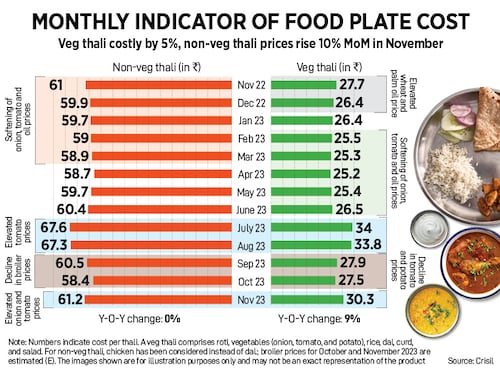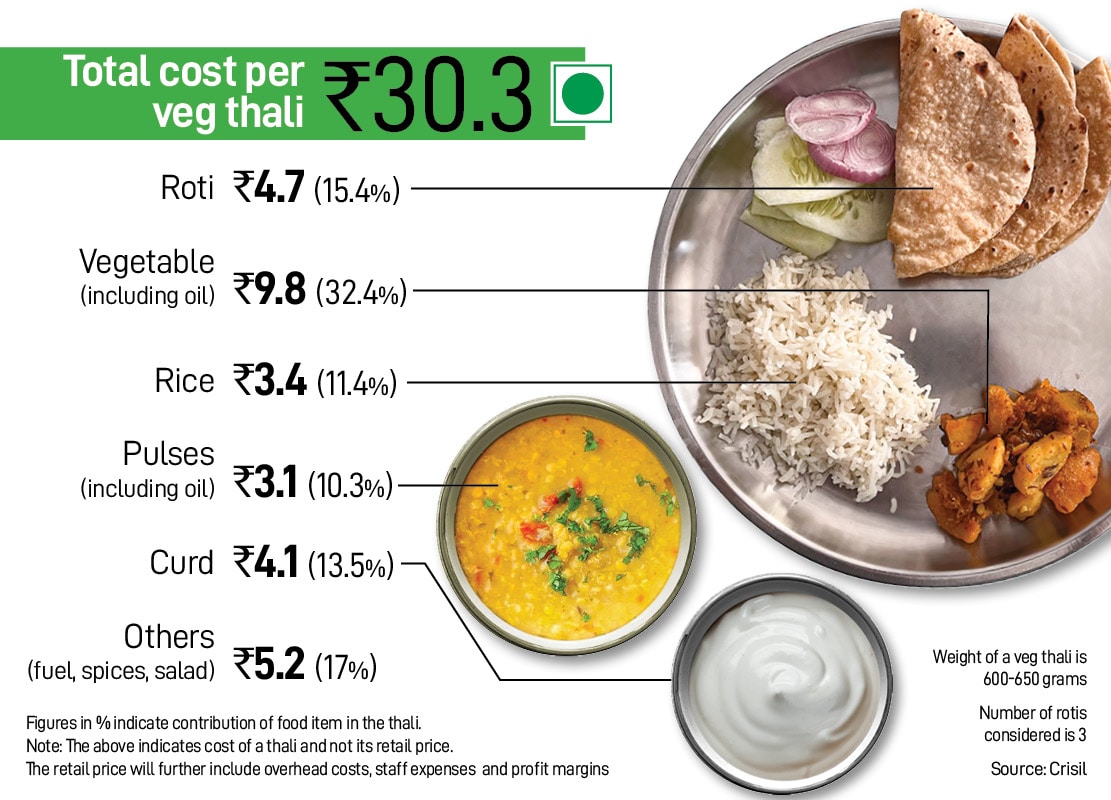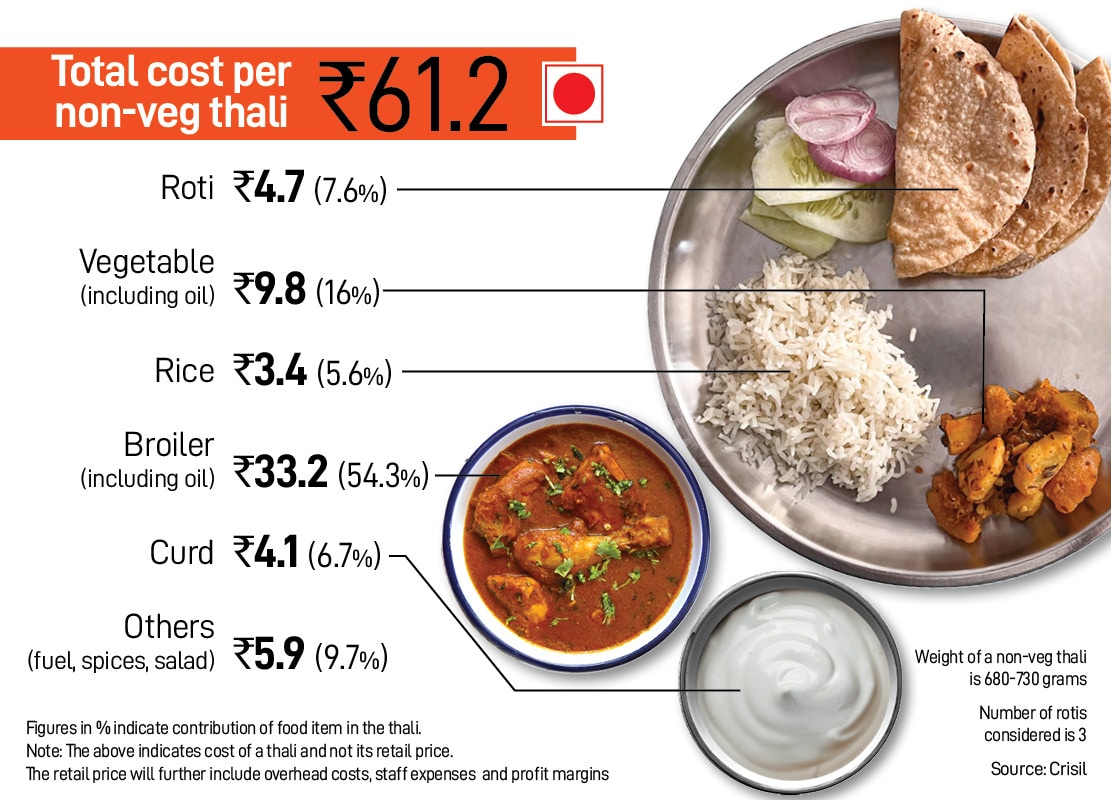How India Eats: Thali heats up again in Nov, costliest in three months
Raging prices of onion and tomato spike cost of both veg and non-veg thali but decline in broiler chicken prices capped the rise in the latter


After a steady decline in last two months, the cost of thali has risen again in November, mostly due to a steep increase in prices of key ingredients like onion and tomato. However, the overall pace of rise in price of a non-vegetarian thali was slower than the vegetarian one due to a marginal decline in the prices of broiler chicken.
In November, the average price of a vegetarian thali was Rs 30.3, an increase of 10 percent, or Rs 2.80, from previous the month, based on an analysis by Crisil. The same thali cost Rs 27.7 in November last year, indicating a rise of 9 percent, or Rs 2.6.
Prices of both onion and tomato, which surged 58 and 35 percent, respectively, in November from a month-ago period led by festive demand and lower output in the kharif season, led to the spike in thali prices, says Crisil.

However, a marginal fall in broiler chicken prices by 1-3 percent capped the increase in the non-vegetarian thali. Broiler chicken prices account for 50 percent of the non-veg thali cost. In the month, the average cost of a non-vegetarian thali was Rs 61.2, a jump of Rs 2.8 or 5 percent from October. Compared to November last year, a non-veg thali price stayed steady at around Rs 61.
The average cost of preparing a thali at home is calculated based on input prices prevailing in north, south, east, and west India. The monthly change reflects the impact on the common man’s expenditure. The data also reveals the ingredients (cereals, pulses, broilers, vegetables, spices, edible oil, cooking gas) driving changes in the cost of a thali.
In October, retail inflation, calculated based on the Consumer Price Index (CPI), eased to 4.9 percent year-on-year but food prices stayed high with major food components like cereals, pulses and spices seeing sticky double-digit inflation. On a seasonally adjusted sequential basis, food inflation was up 0.1 percent month-on-month in October, largely led by pulses (up 2.2 percent), spices (up 1.3 percent), and cereals (0.9 percent). The analysis of monthly momentum of vegetable prices suggest that even as most of the vegetable prices peaked in July and August, the sharp rise in onion prices remains a key upside risk, says UBS Securities.

Adding to the already rising onion and tomato prices, unseasonal rains in the last week of November in Maharashtra may spell further trouble. Onion prices continued to remain elevated in November, rising around 40 percent from previous month, National Horticulture Board data showed. In October-end, onion prices had risen sharply 75 percent from a month earlier. The unseasonal rains may have made prices steeper, as news report suggest.
On November 27, the average wholesale price of summer onions jumped nearly 29 percent at Lasalgaon Agriculture Produce Market Committee, which is India’s largest wholesale onion market. The price increased to Rs 4,260 per quintal on November 27 from Rs 3,300 per quintal on November 25.
According to Kapil Gupta, chief economist, Edelweiss Financial Services, advance estimates reveal a 4.6 percent year-on-year contraction in Kharif food grain output this year, which could potentially push food inflation higher.
(Forbes India"s monthly series "How India Eats" takes a look at how the average price of a food plate in India changes every month, indicating the impact on the common man"s expenditure, by analysing the Indian thali.)
First Published: Dec 06, 2023, 11:00
Subscribe Now